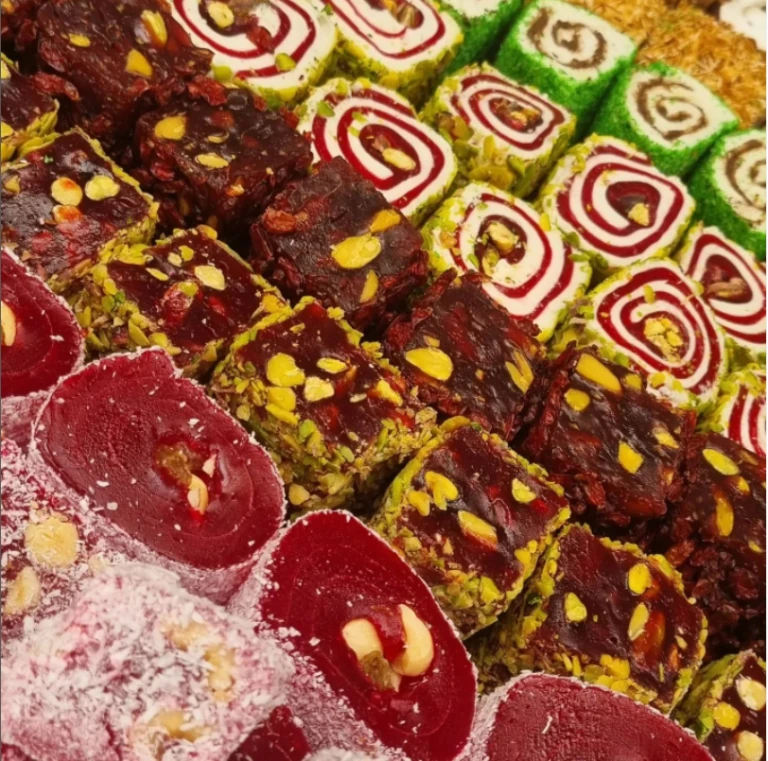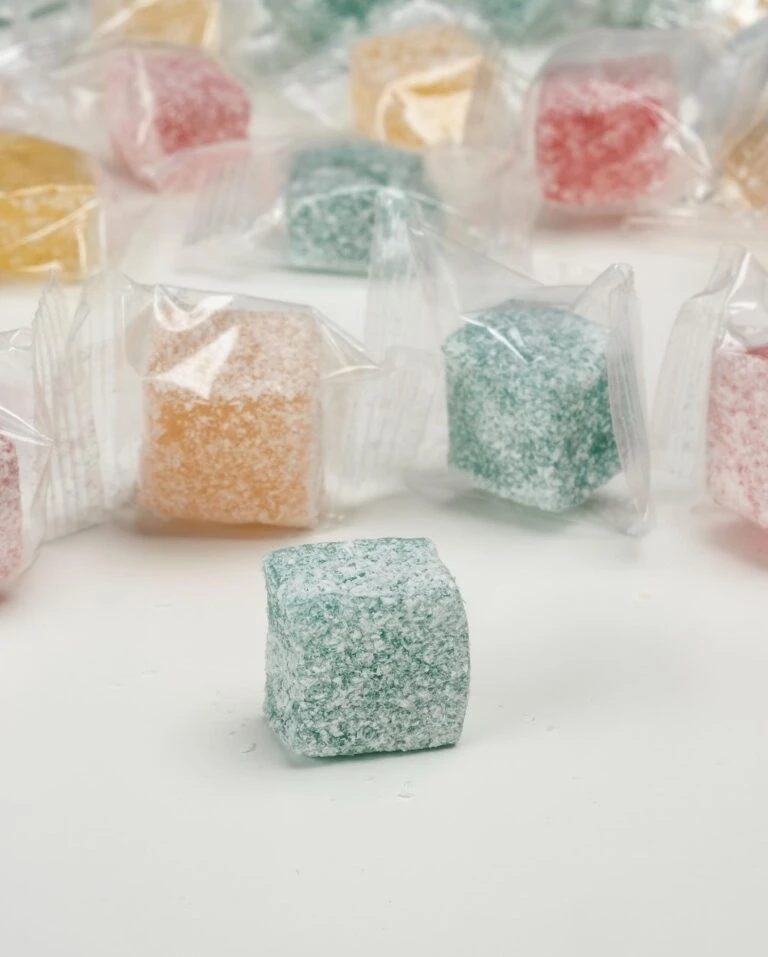Turkish Delight is one of the richest and most varied delicacies in the world, and its name comes from the Arabic word for "soothing the throat". In Turkish culture, the frequently used daily sentences such as "eat sweet, say sweet" fully demonstrate its importance. (The so-called eating sweet, talking sweet, etc. are similar to the Chinese words sweet words, sweet mouth, etc.) About 600 years ago, that is, in the fifteenth century AD, it appeared in Turkey, and it officially appeared in the seventeenth century. Enter the palace of the Ottoman Empire. In the eighteenth century, Turkish Delight was spread all over the world by travelers, and was subsequently called "Turkish Delight". Turkish Delight holds a special place in the hearts of Turks and is recognized by almost every country in the world. Turkish Delight is called by different names all over the world, such as "Rahat" in Romania, "Delicia Turca" in Brazil, and "Lokum" in Greece. This delicacy, which dates back to the Ottoman Empire, is becoming more and more common around the world today. It is a Turkish custom to bring small gifts to family and close friends after a trip. Turkish Delight can also be bought as a souvenir when you return home. Domestic and foreign tourists returning from domestic or foreign trips can purchase these colorful delicacies from airports, entertainment venues, or gift shops at bus stations as gifts for friends and relatives.

Introduction of Turkish Delight
Turkish Delight is known as a court dessert. Precisely because it is a court dessert, it should be noted that it is usually presented in china, silver, bronze or glass for guests to enjoy. In Turkey, it is believed that serving a favorite dessert to a guest shows both respect for the guest in Turkish culture and the status of the host. Whether on holiday, in the family, during family visits and pleasant conversations, Turkish Delight is regarded as an indispensable element by the Turks. Turkish Delight is always present in Turkish families. It usually appears with coffee in receptions. Of course, it can also enjoy its sweet taste alone.
How is traditional Turkish delight made?

The main ingredients used to make Turkish Delight, which are said to be indispensable to the sultans of the Ottoman Empire in Turkey; water, starch, citric acid and sugar. One can replace organic powdered sugar with honey or molasses. To ensure it hardens, the well-prepared fudge contains no gelatin or almonds. As we all know, the consistency is provided by the skill of the cook, and the amount of ingredients is also very important. The sugar is boiled until completely dissolved in the water. The citric acid and starch are dissolved in a separate container, and the dissolved mixture is then added to the sugar water and cooked for a while. Gradually a strong, delightful fragrance of musk and rose will evaporate. After thorough mixing, remove the essence from the fire and mix with the essence or nut, depending on the type, and prepare for the next operation. Be sure to keep the fondant in a starchy container for about twenty hours to create a sticky consistency. High-quality gummies are elastic and have a silky, soft taste. Then place the turkish delight on a marble table, let it cool and cut into strips and mix with the sugar to make sure they don\'t stick together.
A wide variety of gummies

Traditional Turkish Delight covers almost every taste through different processes to ensure that different taste needs are met. This dessert, carefully prepared by an experienced pastry chef, captivates everyone with its gorgeous colors. Different flavors such as sesame, orange, pistachio, pomegranate, rose, walnut, hazelnut, mint, almond, lemon, coconut, cream, chocolate, etc. also represent different colors. And almost every market sells this delicious delicacy, even in a gorgeous package.
Advantages of Turkish Delight
Although Turkish delight contains sugar and starch and may not sound very healthy, it actually has many benefits. In every 100 grams, it contains 89 grams of carbohydrates, 0.19 grams of fat, 18 milligrams of potassium, 0.2 grams of protein, 5 milligrams of calcium and 0.1 milligrams of iron. It is well known that excessive consumption of sugary foods or any other type of food is harmful and not beneficial, therefore, the benefits of consuming Turkish delight in moderation are summarized below:
Gummies can help relieve tonsillitis because it improves throat comfort and, best known, cures the condition in a short period of time;
It is seen as a remedy for all kinds of wounds and pimples;
High carbohydrate content is thought to benefit people with kidney disease;
Think of it as a little energy tank as calories are quickly burned into energy;
It helps to eliminate harmful substances produced by excessive consumption of protein.
source:yummyadvisor,if you want to know more turkish culture and restaurants,you can check it.

